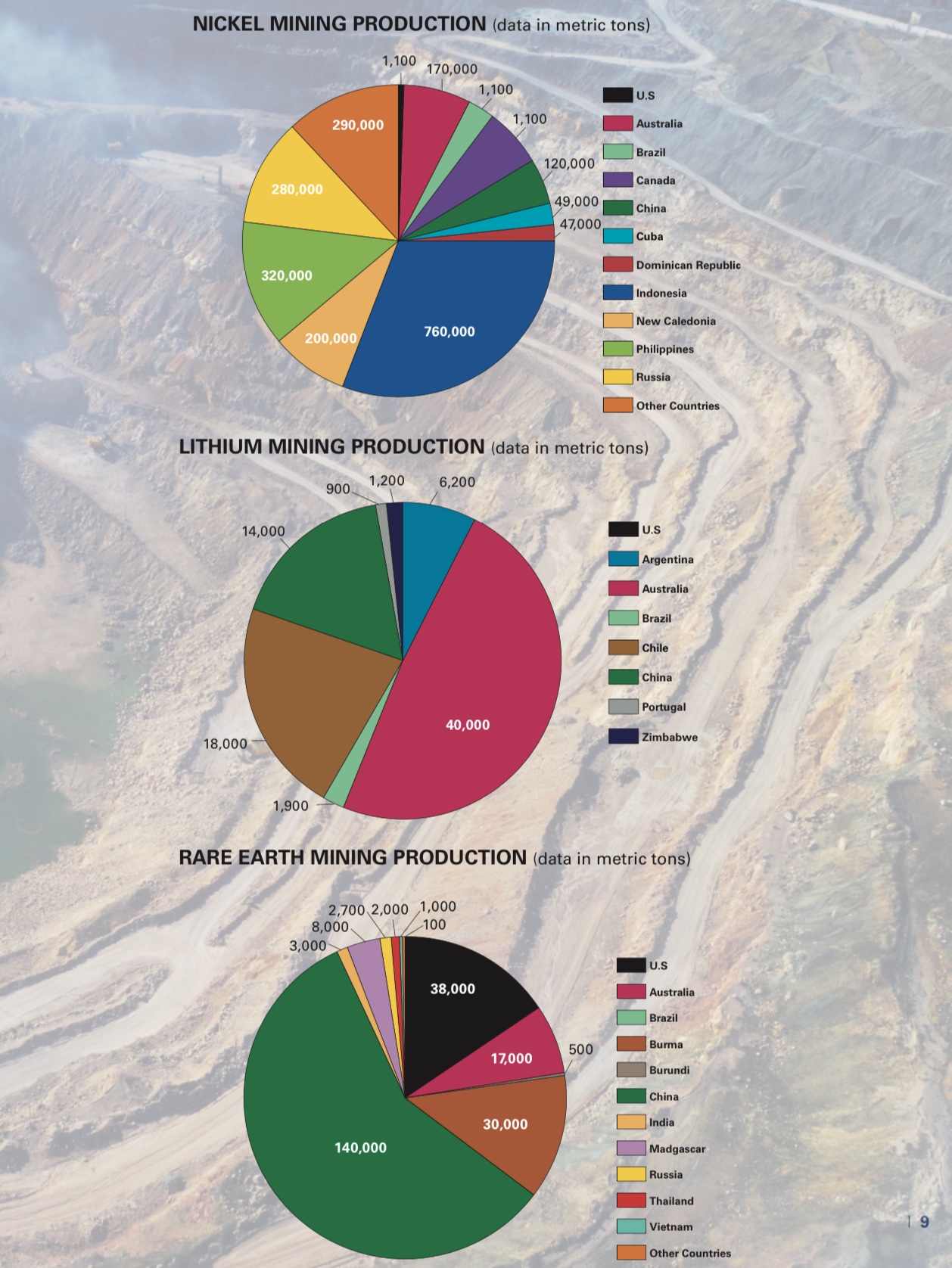In early October, the Woodrow Wilson International Center for Scholars announced the release of a new report entitled “The Mosaic Approach: a Multidimensional Strategy for Strengthening America’s Critical Minerals Supply Chain.”
According to Duncan Wood, Vice President of Strategy and New Initiatives at the Wilson Center and one of the report’s co-authors, “[the] paper reflects the dialogue sustained by a high-level group of stakeholders in the summer of 2021 and argues that the United States must take a number of key steps to make the critical minerals supply chain more resilient. (…) These minerals are vital for the energy transition and for the United States’ geopolitical ambitions.”
The report’s authors call for a “Mosaic Approach,” to our nation’s critical mineral resource woes — involving action by both the private sector and the government at the national and international levels.
If the overall thrust of the report sounds familiar to followers of ARPN, that is is because it is. ARPN has long called for the U.S. to embrace a variant of the “all-of-the-above” strategy we’ve come to know from energy policy discourse.
This — in the context of strengthening U.S. supply chains — would mean a focus on new mining, recycling and reclamation of new minerals from old mine tailings both domestically and within the context of our relationships with our closest allies, as well as building out and leveraging domestic and allied processing capabilities — like filling in the pieces of a mosaic.
While much of the current discourse on strengthening critical mineral supply chains takes place in the context of the accelerating green energy transition focusing on Cobalt, Lithium and the Rare Earths, the Wilson Center report highlights the importance of the more traditional mainstay metals of Copper and Nickel:
“Nickel and copper are two other metals integral to the global energy transition and national security. Copper production is dominated by Chile followed by Peru, China, the United States, and the DRC. Copper and copper alloys are utilized in building and infrastructure projects. Additionally, copper’s conductivity makes it a key mineral for electrical and electronic products. Copper is essential for anode current collection, cell wiring, and for EV charging infrastructure. Due to the importance of electrification to meet global environmental sustainability goals, copper is a strategic and important resource.
Nearly 80% of global nickel is used to produce super alloys and strong materials, such as stainless steel. The amount of nickel used for battery manufacturing is quickly increasing. The largest nickel producing countries in the world are Indonesia, the Philippines, Russia, New Caledonia, a French territory in the South Pacific, and Canada. The U.S. is home to only one nickel-producing mine, located in Michigan. Nearly all of U.S. produced nickel is exported abroad for further processing and refinement. Polymetallic nodules on the ocean floor represent a significant domestic opportunity for increasing U.S. supplies of nickel, with the added bonus that they also contain cobalt and manganese.”
The charts featured in the Wilson Center report’s chapter on “identifying the weaknesses in the CMSC” calling out three key vulnerabilities (challenges of rising demand, global competition with China and governance challenges), underscore that “the United States does not hold an advantage in geographic concentration of critical minerals” – a timely reminder that developing domestic resources must be augmented by cooperation with our allies.
The authors conclude:
“Central to all of these endeavors will be the ongoing cooperation between the U.S. government and the private sector. Stakeholder dialogue is an absolute necessity if the attempts to make America’s critical minerals supply chains more resilient are to be effective. Working with the market rather than against it, harnessing the potential of American enterprise and innovation, and joining with our allies around the world will provide the U.S. with the tools it needs to address the China challenge and to meet its climate ambitions.”
To strengthen domestic manufacturing and national security, we must build out secure and reliable supply chains for all materials underpinning 21st Century technology – both the tech metals and mainstay metals — and address vulnerabilities all along the value chain, from mining to processing and manufacturing. The Wilson Center report is the latest to call on Congress and the Administration to put in place a comprehensive supply chain policy, anchored in the critical minerals and metals that provide form and function to our modern technology.






